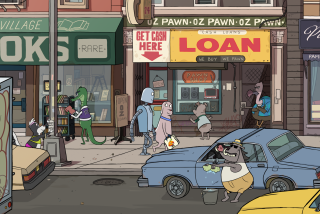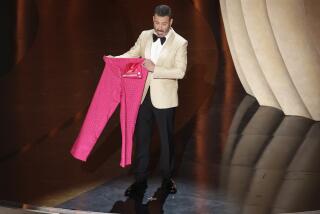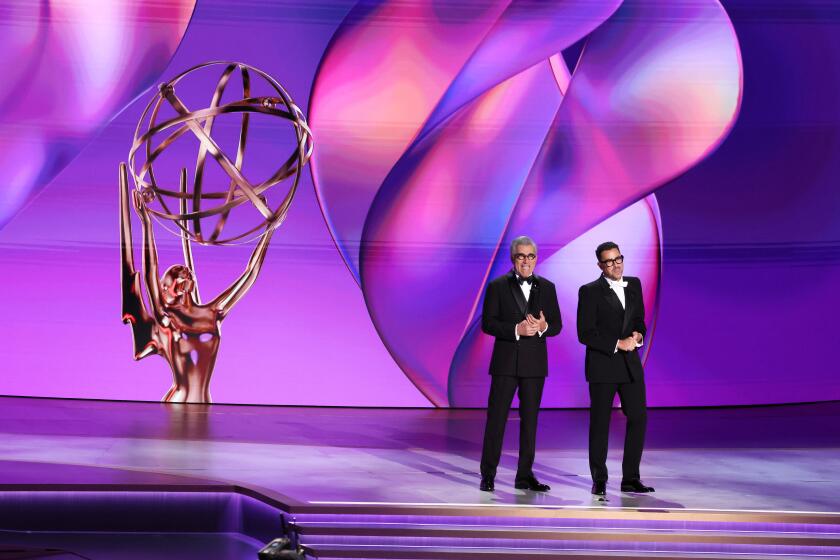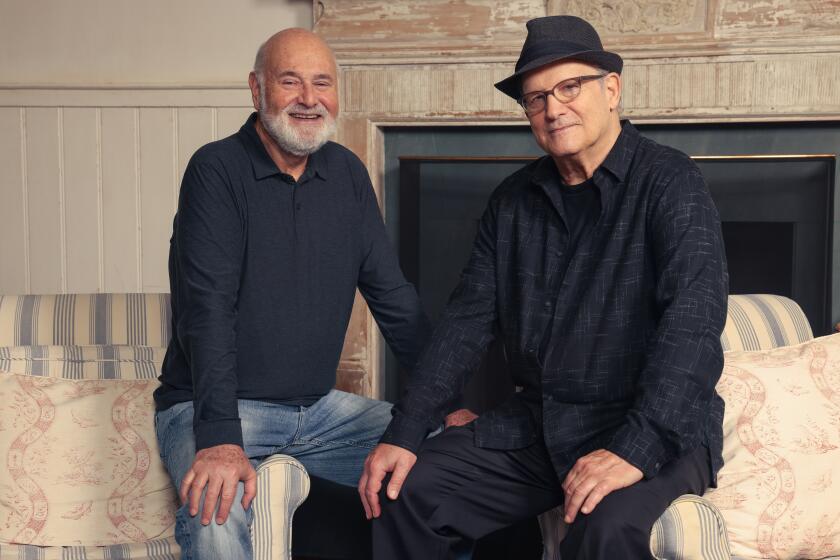Big studio offerings and little gems alike vie for attention in the Oscar animation race
On one side of the competition for the animated feature Oscar are the major American studio contenders; on the other, a slew of hand-drawn films from around the world.
Holding up the computer-generated, star-spangled banner are well-reviewed mega-grossers “Coco” (with its 96% fresh rating on Rotten Tomatoes and its Pixar pedigree), “Despicable Me 3” (part of the highest-grossing animated franchise so far), and “The Lego Batman Movie” (and its 91% fresh rating and more than $300 million in receipts).
For the record:
6:30 p.m. Dec. 7, 2017An earlier version of this post gave the title of a previous film directed by Hiromasa Yonebayashi as “When Marnie Was Here.” It is “When Marnie Was There.”
Picking up the banner from the dormant leader in Japanese animation is “Mary and the Witch’s Flower.” Telling the tale of a young girl in Afghanistan from an award-winning book (“The Breadwinner”) is an Oscar-nominated Irish studio. And from France, a gentle and hilarious collection of plays performed by a farm’s theater troupe – made up of animals – “The Big Bad Fox and Other Tales …,” by a previous Oscar nominee. With “Coco” and “The Breadwinner” covered elsewhere in this issue, here’s a look at the other four:
‘The Lego Batman Movie’
Considering the dour nature of current Batman movies, you may wonder how in the world an animated feature got made of the foolish, “toxically masculine,” Lego version of the Dark Knight. Turns out, Chris McKay is apparently quite persuasive.
“I originally pitched the studio I wanted to make ‘Jerry Maguire’ as directed by Michael Mann, with a lot of Batman jokes in it. For some reason, they let me do that,” says the energetic director.
Best known for TV’s awesomely insane “Robot Chicken” on Adult Swim, McKay oversaw production of “The Lego Movie” when directors Chris Miller and Phil Lord left to work on “22 Jump Street.”
“We wanted all the movies to feel different from each other, to feel unique, like you can’t create a movie like this any place else,” he says. “Lego is a toy, but it’s also a medium. It’s associated with imagination, with creativity.
“We wanted to do a Batman movie that no one else could do, to take a look at the character and history and moral component of what Batman does, what Batman is really like – albeit a Will Arnett critique of toxic masculinity, an egotistical guy” (Arnett plays Bruce Wayne/Batman in both films).
“Lego Batman” has earned $312 million worldwide and scored a stellar 91% fresh rating on Rotten Tomatoes. Not bad for a movie that walked a tightrope with one of the most beloved of all comic-book characters (and the multi-billion-dollar franchises in which he appears).
“There were definitely moments we pushed [DC, Warners and Lego] in ways they were not comfortable with, but ultimately they let us do basically everything we wanted to do,” McKay says, admitting “making jokes about ‘Suicide Squad’ and ‘Batman v Superman’ was cause for concern. Taking pot shots at other companies: ‘Iron Man sucks!’ But we reached out to people at Marvel and they didn’t have a problem with it.
“All these things need a little bit of air deflated from the ego.”
‘Mary and the Witch’s Flower’
One element glaringly absent from recent Oscar races for animated feature has been the presence of a certain Japanese giant.
Not Godzilla, but Studio Ghibli, home to such anime legends as Hayao Miyazaki and Isao Takahata. Much of the Ghibli talent reunited to start the new Studio Ponoc; their first release is “Mary and the Witch’s Flower.”
Directed by Hiromasa Yonebayashi (Ghibli’s “When Marnie Was There”), “Mary” is based on the 1971 English novel “The Little Broomstick.”
In “Mary,” an ordinary girl picks flowers that turn out to have magical properties, finds an enchanted broomstick, and falls into a fantasy world of witches and monsters from which she has to save a friend.
“I had a lot of fun making up all kinds of fantastical, magical creatures and scenes,” says Yonebayashi through an interpreter, “but the [moment] I put the most effort into is when Mary loses her magical abilities and the sign of her [powers] disappears from the palm of her hand and she only has scratches and bruises. Yet she clenches her fist and vows she will go on. I put a lot of my own feeling of strength and effort into drawing that hand … having gotten out of the magic of Studio Ghibli and formed this new studio and starting off on my own, determined to go forward on my own.
“And many people watching the film will be concerned about overcoming the things that they face, and this may give them encouragement that they can move forward and take the first step, with courage as Mary did.”
‘The Big Bad Fox and Other Tales...’
In the mix among the megabudget 3-D spectaculars is a hand-drawn little gem that feels as if it’s peeking around a tree from another, more naïve time.
The French “The Big Bad Fox and Other Tales …,” from directors Patrick Imbert and Benjamin Renner, is based on Renner’s cartoon books, “Le grand méchant renard” and “Un bébé à livrer.” The film is a gentle collection of three stories presented as short plays put on by a farm’s theater company, made up of animals.
“The graphic novel was actually intended more for adults,” says Renner, a 2014 Oscar nominee for “Ernest & Celestine.” “Maybe somehow it’s in the animation, but we definitely aimed the film more at children.”
In the title tale, a supposedly fearsome Fox steals chicken eggs with the intent of eating the chicks when they hatch. He ends up raising the chicks, who want to be like him.
“I really love the way the Fox talks. You don’t expect it,” says Renner, laughing. “When he’s trying to teach the [chicks] to be foxes – the children doing the voices, they were barely acting. They were just being themselves, rude, we loved it. Some things, we just caught on tape and put in the movie.”
Although Renner says he’s “of course a big fan of Pixar and many of those,” his film’s pace and gentility hark to a bygone era: “I don’t mean to be nostalgic, but [I suppose] it’s more like the pace of the older Disney movies, or even the shorts.”
‘Despicable Me 3’
The “Despicable Me” franchise is now the highest-grossing in animated history. It has earned $3.7 billion, with just four films, including “Minions.”
“That blew me away when I saw that,” says co-director Kyle Balda. “I was in Thailand a couple of years ago, and there were Minion toys all over. It’s just amazing how these things happen.”
Though he was working again with longtime series director Pierre Coffin and “secret weapon” Eric Guillon as co-directors, Balda says that massive success didn’t make them feel they could do no wrong.
“Oh, oh, it’s huge pressure,” he says with a laugh. “The audience has invested a lot of affection in these characters. So it would be horrible to let them down on my watch.”
In “Despicable Me 3,” erstwhile World’s Greatest Villain Gru (Steve Carell), these days aiming for World’s Greatest Dad, suffers career upheaval in his new role as hero, then discovers he has a brother (also Carell). Meanwhile, the beloved, yellow, pill-shaped Minions all but abandon him because he’s become evil-deficient.
“Then we bring in this adversary of this former ‘80s child star, Balthazar Bratt,” says Balda of Trey Parker, here in a PG performance. “We’re all children of the ‘80s ourselves; it was like going back to our childhoods. All the ‘80s music and production design; it was a lot of fun.”
But Bond-villain pratfalls and big-budget animation trappings aside, Balda says what stands out most to him is “a quiet and simple moment: Gru is trying to tell [daughter] Agnes there’s no such thing as unicorns. She’s on the verge of tears, and he chickens out and reverses it. Even in storyboards, that was one of my favorite scenes.”
WATCH: Video Q&A’s from this season’s hottest contenders »
More to Read
From the Oscars to the Emmys.
Get the Envelope newsletter for exclusive awards season coverage, behind-the-scenes stories from the Envelope podcast and columnist Glenn Whipp’s must-read analysis.
You may occasionally receive promotional content from the Los Angeles Times.







